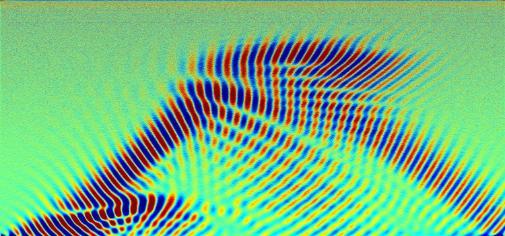Simulations of microwave-plasma interactions
Contact people: Roddy Vann, Matt Thomas (PDRA) & Mads Givskov Senstius (Danish Technical University PhD student)
The generic question of how electromagnetic radiation interacts with wavelength-sized inhomogeneities in the background medium is not fully answered. Fusion plasmas are an excellent medium to investigate this physics: they are extremely well-diagnosed and exhibit a range of exotic properties including anisotropy and nonlinear mode coupling.
The EMIT-3D code, developed at York, is a 3-D full-wave cold-plasma finite-difference time domain (FDTD) program for simulation of microwave interactions with plasma. It is fully parallelised and has been run with success on tier-0 international supercomputers including HELIOS (Japan) and MARCONI (Italy). In particular we are interested in the interaction between microwaves and plasma fluctuations including coherent blobs/filaments and between microwaves and turbulence. Most recently we have calculated the broadening of injected heating beams as a consequence of edge turbulence and demonstrated excellent agreement with experimental measurements.
Figure: EPOCH simulation of 2-D O-X-B mode conversion. (Plasma density increases vertically; the constant magnetic field is horizonal.)
Nonlinear and kinetic microwave simulations are conducted at York using the EPOCH particle-in-cell code. The figure above shows the result of an intensive simulation on the HELIOS supercomputer calculating the O-mode to X-mode to electron Bernstein wave mode conversion process. We are currently applying EPOCH, in collaboration with the Danish Technical University, to study parametric decay instabilities that occur at the upper hybrid layer and which may decrease the efficient of radiofrequency heating techniques.

